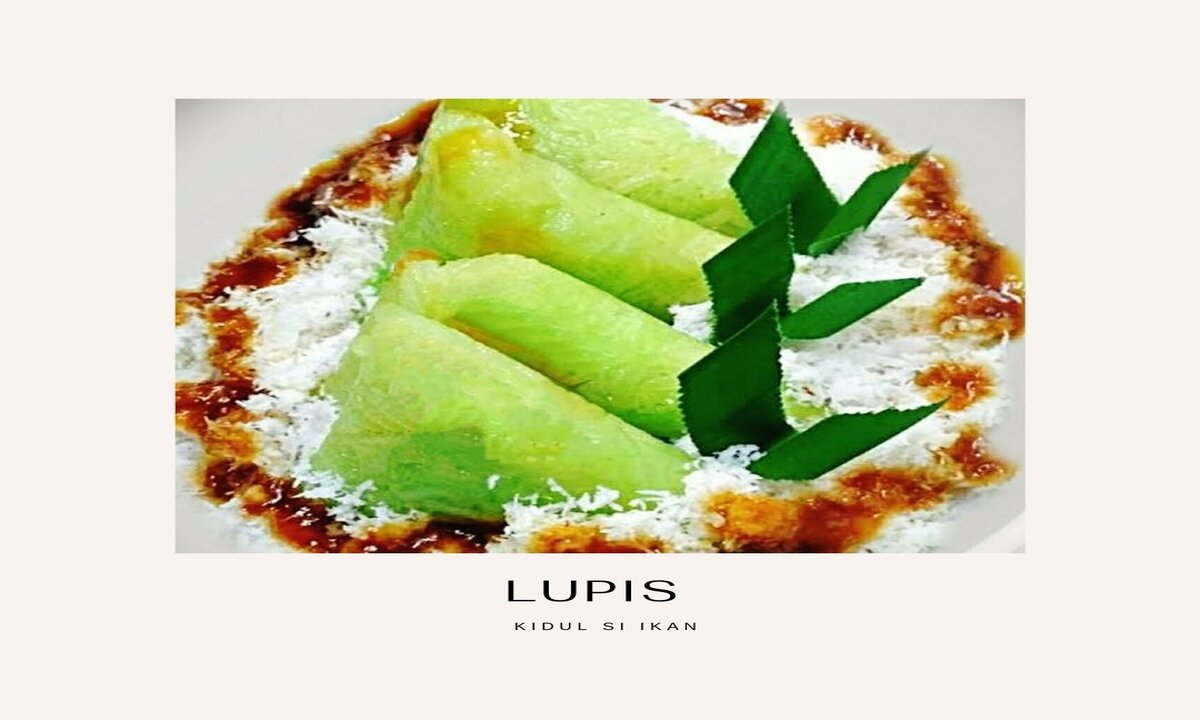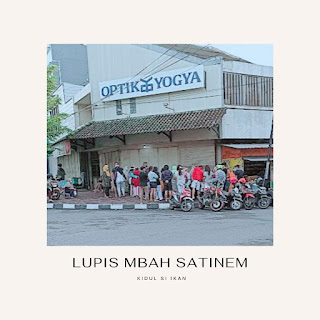Yogyakarta Traditional Culinary Tour
Table Of Contents
 |
| Lupis is categorized as a sweet and savory snack |
1. Introduction
What do you think about food wrapped in banana leaves? In my place, the majority of banana leaves are used for food that is processed by steaming, either in the category of snacks, heavy food or side dishes. Why do Asian majority countries like banana leaves as food wrappers is because it is healthier, cheaper and the aroma that produced when banana leaves are steamed or grilled, arouses their own appetite for food.
Banana leaves are leaves that produced by banana plants. Banana leaves in the Nusantara-culinary have a major role as a support for decoration, complementary and packaging of food ingredients; besides that, it is also used in various religious activities. Some kind traditions like this are also known in many parts of South and Southeast Asia. Banana leaves contain the same large amounts of polyphenols as tea leaves, in the form of EGCG (Epigallocatechin gallate), so that they produce a distinctive aroma when they are used to a food supplement.
2. What kind of food is Lupis?
How about banana leaves at your place? It is easy for banana trees to be found in Indonesia because it is a tropical country, which has the best climate for bananas to grow, so banana leaves are easily found in any province. This time the author will not discuss about bananas or it’s leaves, but about a food called Lupis and its packaging, which using banana leaves, but if you are interested to knowing about bananas in Indonesia, we will discuss it in the next time.
What kind of food is Lupis? Lupis is a typical of Indonesian food, especially in Java. There are two common forms of Lupis: triangular or round elongated like Lontong.
Lupis is made from cooked glutinous rice wrapped in banana leaves, sprinkled with grated coconut and drizzled with palm sugar but some people substitute palm sugar for honey because they think palm sugar is too sweet.
For its natural green color, usually local residents use the green color of the banana leaves, in the author's own family, especially mothers, prefer to use leaves of a kind banana called Kepok/Sarawak banana, because it produces a best color, but can also add Pandan leaves or some food color extract.
Lupis is categorized as a sweet and savory snack with a distinctive aroma of banana leaves. The sweet taste comes from the sauce made from palm sugar and the savory comes from glutinous-rice and grated coconut. Sticky rice is a type of cereal grain that has a texture and content similar to rice, sticky rice itself is quite popular with the name glutinous-rice and obtained from glutinous-rice that grows in tropical areas such as Southeast Asia.
Due to some information of Lupis, said that it has existed since the Dutch colonial era, the Javanese community is compact in recognizing it as Lupis.
This cake is also claimed to be a snack from several regions, such as Jakarta, Lumajang, and other Java islands in Indonesia. In addition to consumption, Lupis is also used for religious events called Giant Lupis which are held every 8th of Shawwal in the Pekalongan city.
3. Lupis Mbah Satinem
 |
| Jalan Bumijo which borders Jalan Diponegoro, Yogyakarta. |
Lupis is very easy to find in Yogyakarta city, especially at traditional markets, with a price of IDR 3,000 per proportion. Talking about traditional culinary, this city has a Lupis seller that is popular lately as "Lupis Mbah Satinem". A netizen once created video-content about Mbah Satinem and her delicious Lupis that he liked, commented and has been shared more than a thousand times.
Mbah Satinem has been selling Lupis from generation to generation at the front end of the shop at the T-junction of Jalan Bumijo which borders Jalan Diponegoro, Yogyakarta.
One of the local articles that had reviewed him informed that, in 1963 Mbah Satinem started making Lupis either Cenil based to the recipe from her mother that taught her and then peddled it.
Evidently, that according to Mbah Satinem's confession that the second President Republic of Indonesia, Bapak Suharto, also often ate her Lupis, Gatot and Tiwul. As she continuing the story, she said that Soeharto's adjutant often stopped and buy some.
One serving of Lupis, Gatot, Tiwul, and Cenil made by Mbah Satinem is priced at IDR 5,000. While the complete package which contains of six types of snacks that are usually ordered for events, which are set at a higher price. For the package that is tampered with, the price is Rp. 150,000. The contents are six kinds, soft-Tiwul, rounded-Tiwul, Lupis, Sticky-rice, Cenil, and Gatot (source: Kompas.id).
Lupis Mbah Satinem opens at 6.00 am and will close if the merchandise is up and usually at 7.30 am or 8.30 am. So, if you are on vacation in the Yogyakarta, you must try this delicious cross-generational Lupis.
4. Other Information
Traditional market lupis price is IDR 3,000/portion
Lupis Mbah Satinem Price:
Lupis / Gatot / Tiwul / Cenil are IDR 5,000/portion
Package for six kinds of IDR 150,000
Operating hours: 6.00 am to 7.30 am or 8.30 am
Location of Lupis Mbah Satinem 👈














No comments: